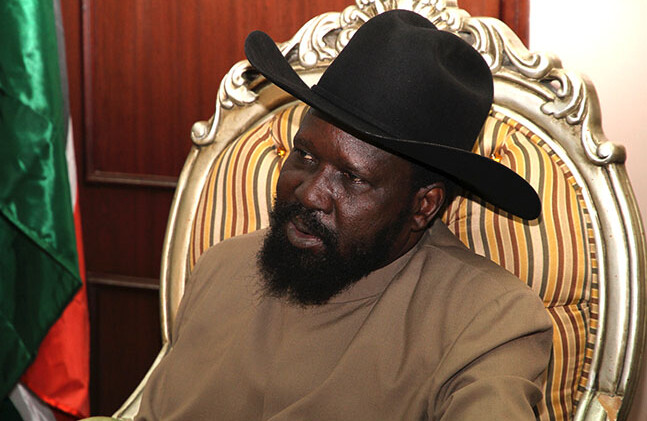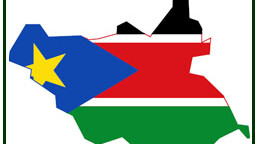Several days before South Sudan's president, Salva Kiir, signed a peace agreement with former-vice president Riek Machar on August 27, 2015, I was asked whether I thought Kiir would actually put pen to paper. I said, "Yes." More precisely, I said, "Yes, but..." To understand my doubts about the recent peace agreement—that indeed Kiir did sign—one must look back to the region's long ago and recent history.
I have studied South Sudan and its vast challenges for over 20 years now (not a long time compared to so many other scholars and practitioners whom I deem the real experts). During the civil war between the government in Khartoum and the South Sudan People's Liberation Army (SPLA), which lasted from 1983–2005, I traveled through the region, at times with contingents of the SPLA. I spoke with civilians and soldiers, leaders, and aid officials, trying to find out more about the insurgent group: whom they claimed to represent, whom they really represented, and what noncombatants caught in the crossfire thought of it all. Each time I traveled to South Sudan, even after the most recent war with Khartoum, I saw little change in terms of human security.
Three months after independence July of 2011, I went back to South Sudan. While the capital, Juba, was indeed quite different, the areas where I ventured in the northern part of the country near Bentiu and Malakal, were still starkly under-developed. Citizens remained frustrated and fearful. They were frustrated with the continued poverty, despite the huge amounts of aid money flowing into the country from the West. They were angry at the corruption among political elites in Juba. They were also frustrated and at times fearful, not of the militias active in the area, but of their own national army. They testified to selective disarmament, which left many communities vulnerable in the face of land disputes. Giving up arms meant forgoing their ability to protect themselves and their communities from government soldiers and raiders. They were nervous about the increasing ethnic tension between groups such as the Dinka, the Nuer, and the Shilluk. They were also frustrated with land tenure issues. Members of the military are accused of occupying abandoned plots in key towns without compensation to or consent of the owners. They have also been accused of building on and selling non-owned plots. According to some, soldiers boasted that they took precedence in ownership of land over those who fled during the war because they were the ones who fought to get it back. Thus when civil war broke out in 2013 between forces aligned with Machar, a Nuer, and those allied with the president (a member of the Dinka ethnic group) I was far from surprised.
To understand the most recent conflict in South Sudan, one needs to look back into Sudan's history. Under the colonial government shared between the Egyptians and the British, the southern portion of Sudan was administered separately from the north. Resistance in the south, along with religious and cultural differences with the north, led colonial authorities to pass different administrative and economic policies that reified this separation. The balance in levels of economic, political, and educational development between the north and the south was severely disproportionate. By the end of colonialism, more than three-quarters of state expenditure went into the northern cotton-growing scheme, and all government and higher education facilities were located in Khartoum in the north and its surrounding towns. The gap between the regions was widened further by attempts to dominate and Islamicize the south through draconian policies of successive regimes.
During the first and second civil wars between Khartoum and the southerners (1956–1972 and 1983–2005 respectively) the latter were adamant: they did not want Khartoum to impose its Islamic tenets on them. The south preferred a system of self-rule if not independence. Yet the southerners did not know how to rule themselves—they had spent generations either fighting the north or fighting one another. Furthermore, when Sudan obtained its independence in 1955, the south was underdeveloped in every measurable metric. The British left a geographically significant portion of the country that could not stand on its own as a federated state.
As is clear from the events of these past few years, the South Sudanese are not a cohesive unit. The SPLA's history in particular is riddled with fractionalization. There were personal and ideological differences between leaders in the movement, for example. And the government in Khartoum certainly added oil to the fire when it co-opted local militias on its behalf—what one SPLA member called "the balkanization of tribes." Yet despite this animosity and tension among Southern Sudanese, then-SPLA leader John Garang and others were able to bring the major parties of the conflict to the bargaining table and end the war in 2005.
Several things occurred after the signing of the Comprehensive Peace Agreement (CPA), however, that weakened and arguably undermined the peace process. This, I would argue, led to South Sudan's recent implosion. First, Garang died in a helicopter crash. Salva Kiir is no John Garang. While Garang was indeed a divisive character, he knew how to keep his friends close and his enemies closer. Second, while the humanitarian community focused on the displaced people and their return, the Western governments focused on moving South Sudan toward independence. However, at the same time the IMF and the World Bank focused on "African independence starter loans." Yet South Sudan has remained one of the most impoverished countries in the world. One reason for this is the lack of attention to internal security concerns such as unfettered arms flows, land disputes, and corruption among elites. The international community operated under the assumption that stability comes by way of improved services and institution building. So, in the years leading up to independence and in the months afterward, aid increased. Global assistance to South Sudan went from $1.2 billion in 2004 to $2.1 billion in 2005. By 2009, the amount had increased to $2.4 billion.
But South Sudan has oil, you argue! It should get money from that. True, but oil is South Sudan's only export. And, the oil must travel through Sudan to get to ports that will carry it overseas. Furthermore, the national economy is not based on much else. Oil money has not been used to rebuild other potential economic sectors (such as an agricultural industry), and it is widely acknowledged that leaders of South Sudan have pocketed large amounts of aid money.
Before both parties signed the agreement, international affairs expert Andrew S. Natsios wrote that an entirely new approach was needed if the negotiations failed. Natsios was not wrong - an entirely new approach was needed. However, the approach he suggested would not have worked. The tactic he suggested would seek to "weaken the military capacity of the warring parties while urgently brokering a humanitarian cease-fire." There are several problems with this proposal. The first concerns the rather nebulous phrase, "a humanitarian cease-fire." Natsios writes about aid groups, food programs, and urgent assistance to starving regions. Yes, all of these things were and continue to be necessary for the Southern Sudanese people. However, such actions have been attempted before. Evidence that such a proposal would (and will) not be effective can be found in the challenges that occurred during the 1983–2005 civil war, when the SPLA broke into factions that fought one another. This split was largely along ethnic lines. During the war that ended in 2005, UN security corridors for aid delivery were established. One of the greatest weapons these factions used during that war was the obstruction of relief and food supplies to their enemies' regions. The north was also a part of this. Who is to say that this is not going to happen again? What specific policies will be enacted—and how will they be carried out--to prevent a repeat of these war crimes? The devil is in the details, and the international community must ensure the details do not further exacerbate the civilian suffering already taking place.
The second challenge refers to Natsios' suggestion of weakening the military capacity of warring parties. Indeed, weakening the warring parties by putting arms embargoes on the country will reduce the capacity of groups, but only to an extent. The problem is that the country is already awash with weapons. Arms dealers are not going to stop bringing their goods into the country just because there is a weapons embargo or sanctions. In fact, that would increase the demand for their product. Furthermore, this proposition does not reflect the reality of the South Sudanese peoples nor their leaders. Commanders lead small groups and operate in small areas (villages, towns, etc.) and their loyalties are not first and foremost to the central government. We need to begin to understand this if a peace agreement is going to be successful.
Yes, President Kiir signed the peace agreement. However, what he pledges to do in the meeting rooms of Addis Ababa and what he does in South Sudan will be two different things. Why? Because while the international community and specifically the peace negotiators have certain ideals of what should occur in South Sudan, Kiir has to deal with his patrons in Juba. The negotiators themselves (especially the five African nations that participated in brokering the negotiations) were aware of this. Just look at their human rights records. Kiir personally may have wanted to agree to the deal—but if those supporting him did not, then his hands were tied. His first allegiance is to those who immediately surround him in Juba—those who have remained loyal to the new government. He owes them in several ways, including politically. His allegiance is not to the international community and certainly not to the South Sudanese who are caught in the middle of hostilities. His priorities are to address the political realities back home.
If President Kiir does not remain committed to the peace deal (and the cracks are already beginning to show), international pressure in the form of sanctions, arms embargoes, and more will likely be imposed. Yet a firmer stance from the U.S. and regional leaders will only make a slight difference. Worse, sanctions could cause further rifts between the military and political elites in South Sudan. Kiir knows his political survival requires him to provide material goods. Therefore, he will acquiesce to the international community in order to rake in "rewards." With a signed peace agreement, the international community (and the U.S. in particular) is willing to supply him and his country with these goods.
And Westerners like to "give stuff." It shows our goodwill, our magnanimous nature. But we suffer from a short-term memory. We give "stuff" because we think giving people "stuff" will solve fundamental problems. No water? Dig the village a well. No medical care? Build a medical clinic. No way to defend oneself from enemies—who could turn into "terrorists"? Provide weapons and training. The point is, it is easy to give stuff because, as a military friend of mine says, it's a "one-and-done." Yet we rarely take the time to analyze whether providing these conflict-ridden places with "stuff" is the right thing to do.
Meanwhile, in South Sudan, while the international community has been focused on development and post-conflict governance tasks (another vague phrase), the South Sudanese find themselves once again in the crossfire—literally.


